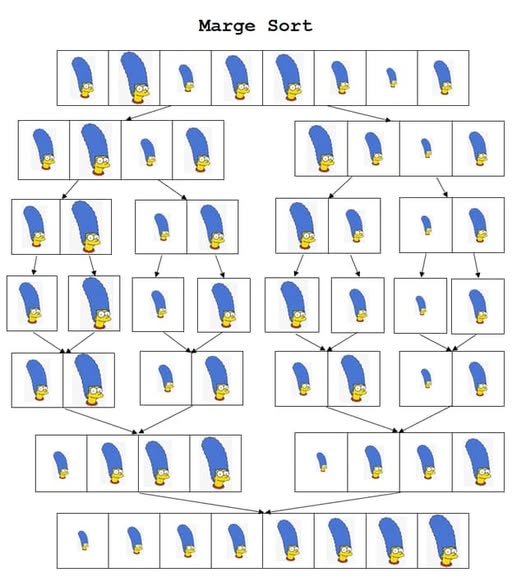How does the last step sort an of the sizes? Why even have all the other steps if that one can do it all?
Science Memes
Welcome to c/science_memes @ Mander.xyz!
A place for majestic STEMLORD peacocking, as well as memes about the realities of working in a lab.

Rules
- Don't throw mud. Behave like an intellectual and remember the human.
- Keep it rooted (on topic).
- No spam.
- Infographics welcome, get schooled.
This is a science community. We use the Dawkins definition of meme.
Research Committee
Other Mander Communities
Science and Research
Biology and Life Sciences
- [email protected]
- [email protected]
- [email protected]
- [email protected]
- [email protected]
- [email protected]
- [email protected]
- [email protected]
- [email protected]
- [email protected]
- [email protected]
- [email protected]
- [email protected]
- [email protected]
- [email protected]
- [email protected]
- [email protected]
- [email protected]
- [email protected]
- [email protected]
- [email protected]
- [email protected]
- [email protected]
- [email protected]
- !reptiles and [email protected]
Physical Sciences
- [email protected]
- [email protected]
- [email protected]
- [email protected]
- [email protected]
- [email protected]
- [email protected]
- [email protected]
- [email protected]
Humanities and Social Sciences
Practical and Applied Sciences
- !exercise-and [email protected]
- [email protected]
- !self [email protected]
- [email protected]
- [email protected]
- [email protected]
Memes
Miscellaneous
When you merge two sorted lists, you only have to compare the first element of each, since you can trust that all of the other elements are bigger. All the steps before that are there to make sure that is true.
Wait, how do I know that all four of the right half aren't smaller than all four of the Left half?
You don't, and they can be.
Watch the animation on Wikipedia: https://en.wikipedia.org/wiki/Merge_sort
It doesn’t matter. You check the first of each group and pick the smallest, then compare the one you didn’t pick with the next one of the other group. In your example, you would pick all of the ones from the right side and once it is empty, just add all the ones on the left.
The one and only way to learn sorting algorithms: https://youtu.be/dENca26N6V4?si=pDZoR0uRiuGoqwkr
I'd watch this if I didn't know about programming just for the sheer weirdness
If you want to zipper two sorted lists, you compare the first element of each list, pick that first, take the next element of that list, rinse & repeat until one list runs out and then just chuck the entire rest of the other list in the remaining space, even if that's just one element. Since your two initial lists are already sorted, you can trust the combined list to also be sorted.
So the point is that always only exactly 2 elements are compared and so you first have to split everything into groups of 2. Seems very inefficient for larger datasets, since you need to handle every single item over and over again and compare so so often. But not a sorting and comparison expert, so no idea if human sorting logic applies at all.
Tbf, Merge Sort has a Big O of n log (n) in all cases, so it's a pretty mid sorting algorithm in general, but it's conceptually straightforward and easy to explain to newbies.
There's no better big O sorting method for generic lists. Heap sort has better averages but the big O is the same in the end.
Step 4 seems to do nothing?
Step 4 splits the pair above into single elements, from step 5 on the groups are getting merged.
*Marged
My bad
Oh right, okay.
